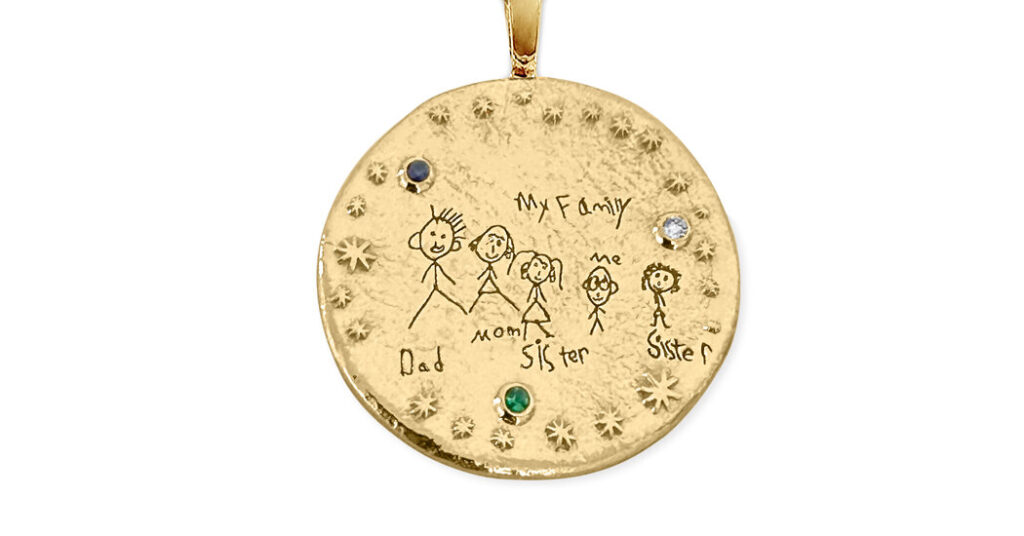To mimic Violet’s jagged letters on the flat and round expanse of Retrouvaí’s Fantasy signet ring, Ms. Stone took a photo of the paper on which Violet had written the names, scanned it to capture the proportions and then handed it off to her engraver. “We used one of our deeper signet techniques, where we almost burn the engraving and make it really dark,” she said.
At Lylie, a fine jewelry brand in London founded by Eliza Walter in 2017, kids’ drawings sometimes arrive already digitized because the children created them on tablets. “Suddenly, you’ve got a tool kit that is much easier to make things happen,” Ms. Walter said.
Technology can expedite the process, but it is hardly necessary. Renna Brown-Taher, founder and creative director of the jewelry company Renna in New York, recently received a decades-old Post-it note from a client. On it, the client’s father had written a short note accompanied by a math problem for her to solve (“Miss You 11 x 2”).
“He was mathematically inclined and this was his love language,” Ms. Brown-Taher wrote in an email. “Our client, then a little girl, penciled in ‘22’ in her own handwriting. Many years later, she still held on to the Post-it. We decided to exactly copy the writing of the Post-it, by hand, onto her pendant. Priceless memories come in many forms.”
Translating the intricacies of a child’s artwork, however, can introduce unexpected engineering challenges. Ms. Winston of Brent Neale learned that when she received a photo of four wooden craft sticks with googly eyes stuck on them that had been wrapped with white string. Her client wanted the creation to serve as a model for a necklace.
“We were going to cut rainbow moonstones for the googly eyes, but we tried drilling black diamonds into them and they would break,” Ms. Winston said. “We experimented with high polish platinum and we burnished the black diamond, as the pupil, into the center. There’s a lot of trial and error.”
